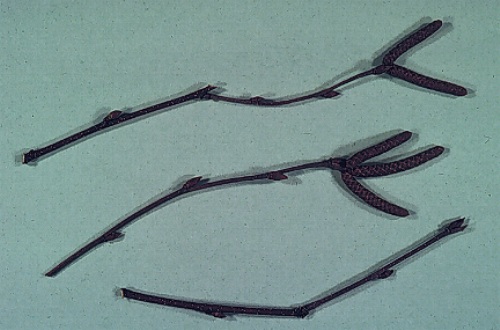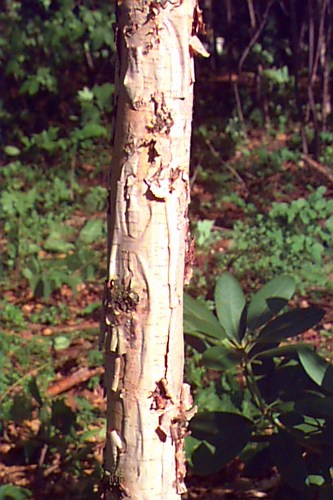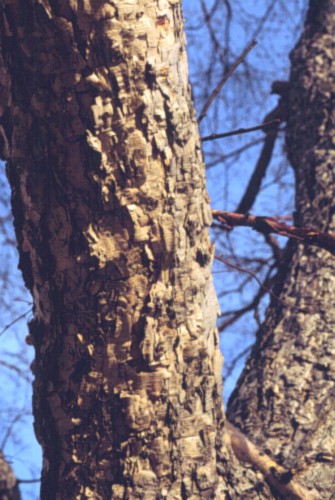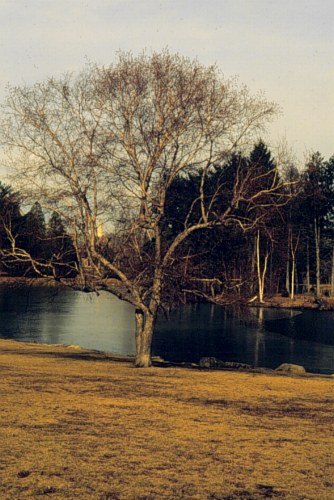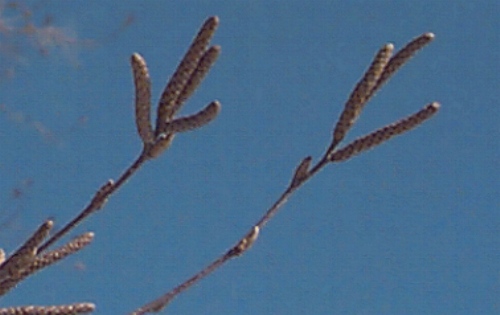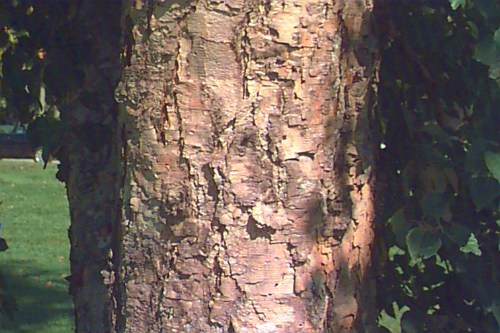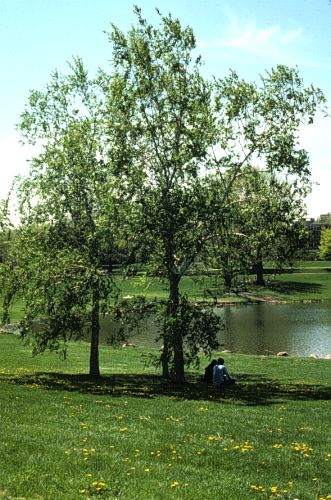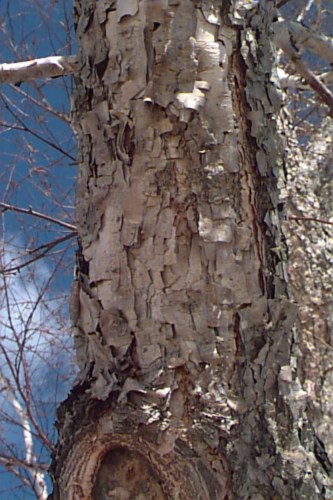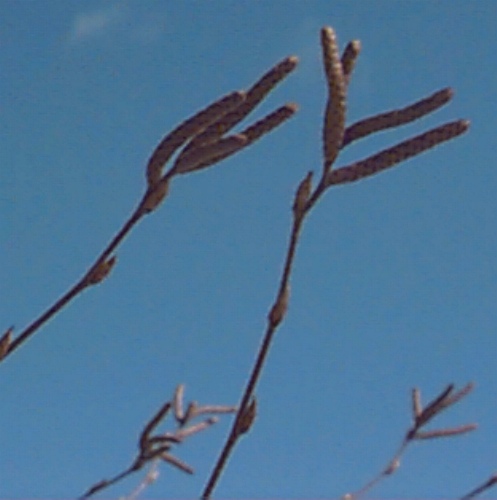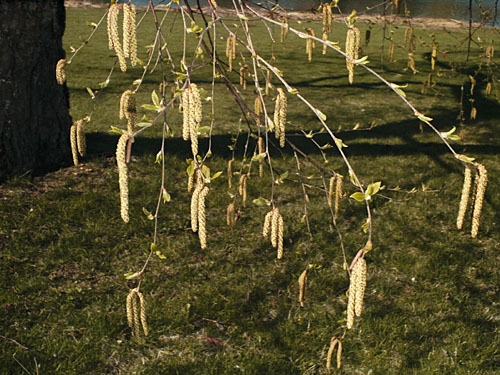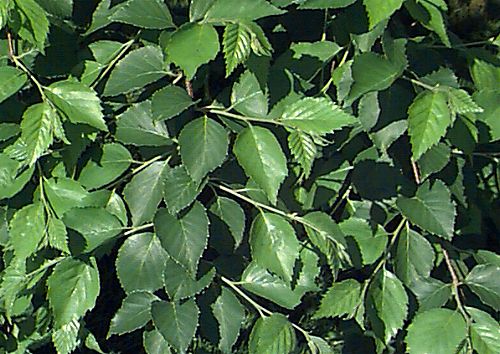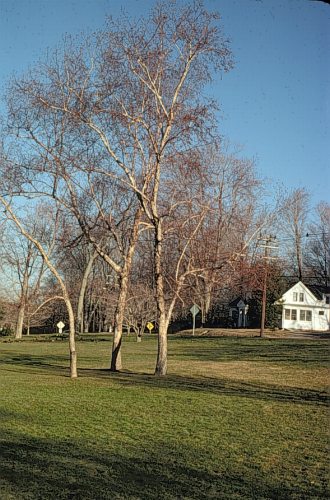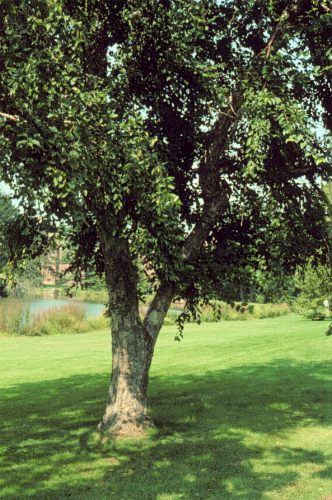Betula davurica
Dahurian Birch, Asian Black Birch
Betulaceae
ExpandHabitat
- native to northern China, Korea, Japan
- zone 5
Habit and Form
- 40' to 60' tall, deciduous
- rounded canopy with spreading branches
- single or multiple trunks
- casts relatively light shade
- medium texture
Summer Foliage
- alternate, simple leaves
- 2" to 4" long, 1.5 to 2.5" wide, ovate shape
- dark green and glabrous upper surface
- dentate-serrate margins
Autumn Foliage
- fairly uniform and showy yellow
Flowers
- blooms in April, but visible before bloom
- monoecious: male and female catkins
- not showy, but interesting
Fruit
- small nutlets borne in cylindrical catkins
Bark
- very showy and interesting
- similar to B. nigra bark
- on younger branches exfoliates in thin curls
- on older branches it puffs on the trunk in blocks resembling vermiculite
- color is mixture of orange, silver, gray and brown
Culture
- tolerant of dry, gravelly, unfertile soils
- easy to grow
- best in full sun
- avoid high pH soil to prevent chlorosis
Landscape Use
- specimen
- lawn tree for smaller yards
- for showy bark
- increasing in popularity in the northeastern United States
- plant singly or in small groupings
Liabilities
- chlorosis on high pH soils
- some feel the tree lacks vigor or is short-lived, although this is not a consensus opinion
- rare, so may be hard to locate for purchase
ID Features
- unique exfoliating bark
- could be confused with B. nigra due to similar bark, but B. nigra has a wedged-shaped leaf base, while B. davurica has a more rounded leaf base.
Propagation
- easily grown from seed
- stratification enhances germination
Cultivars/Varieties
- None
